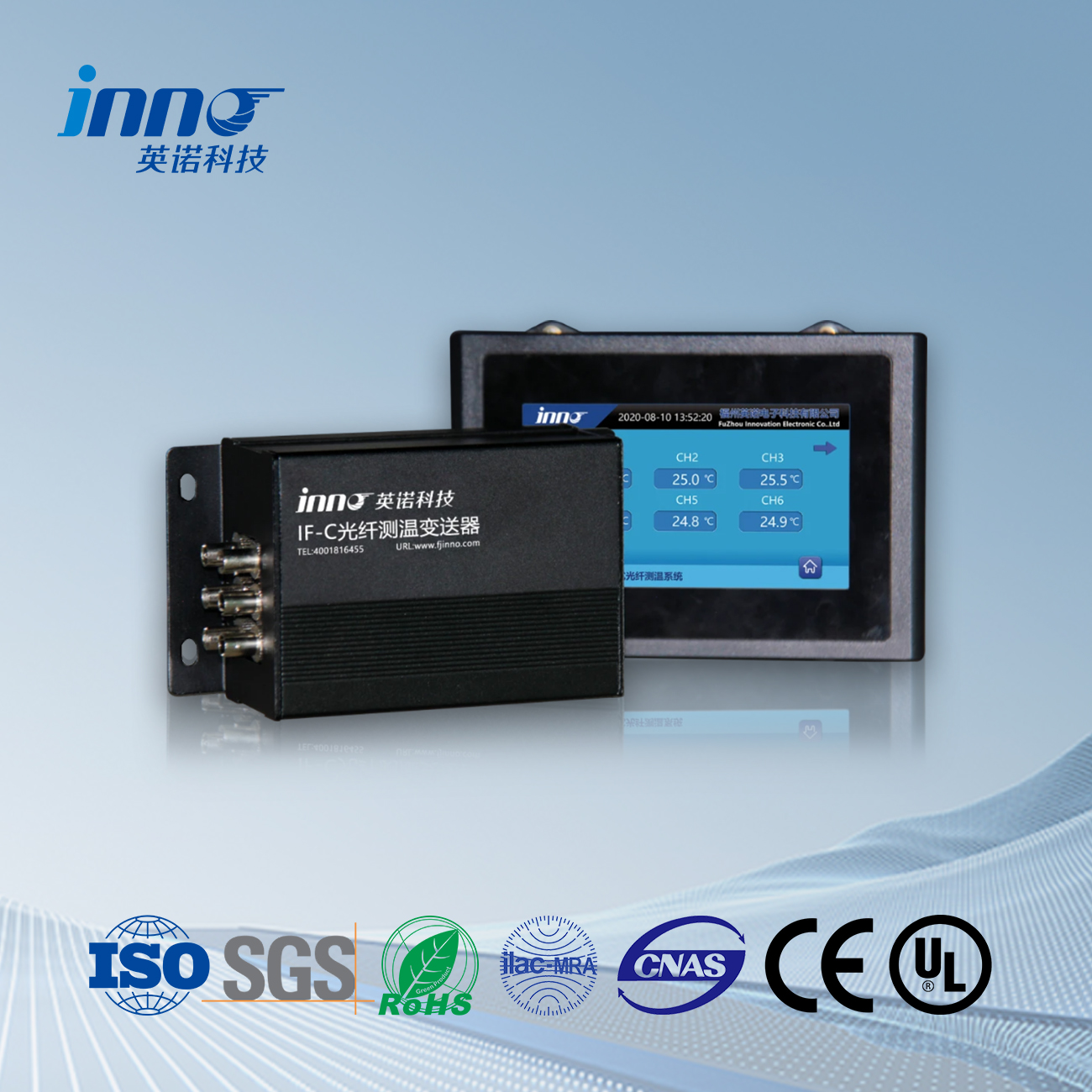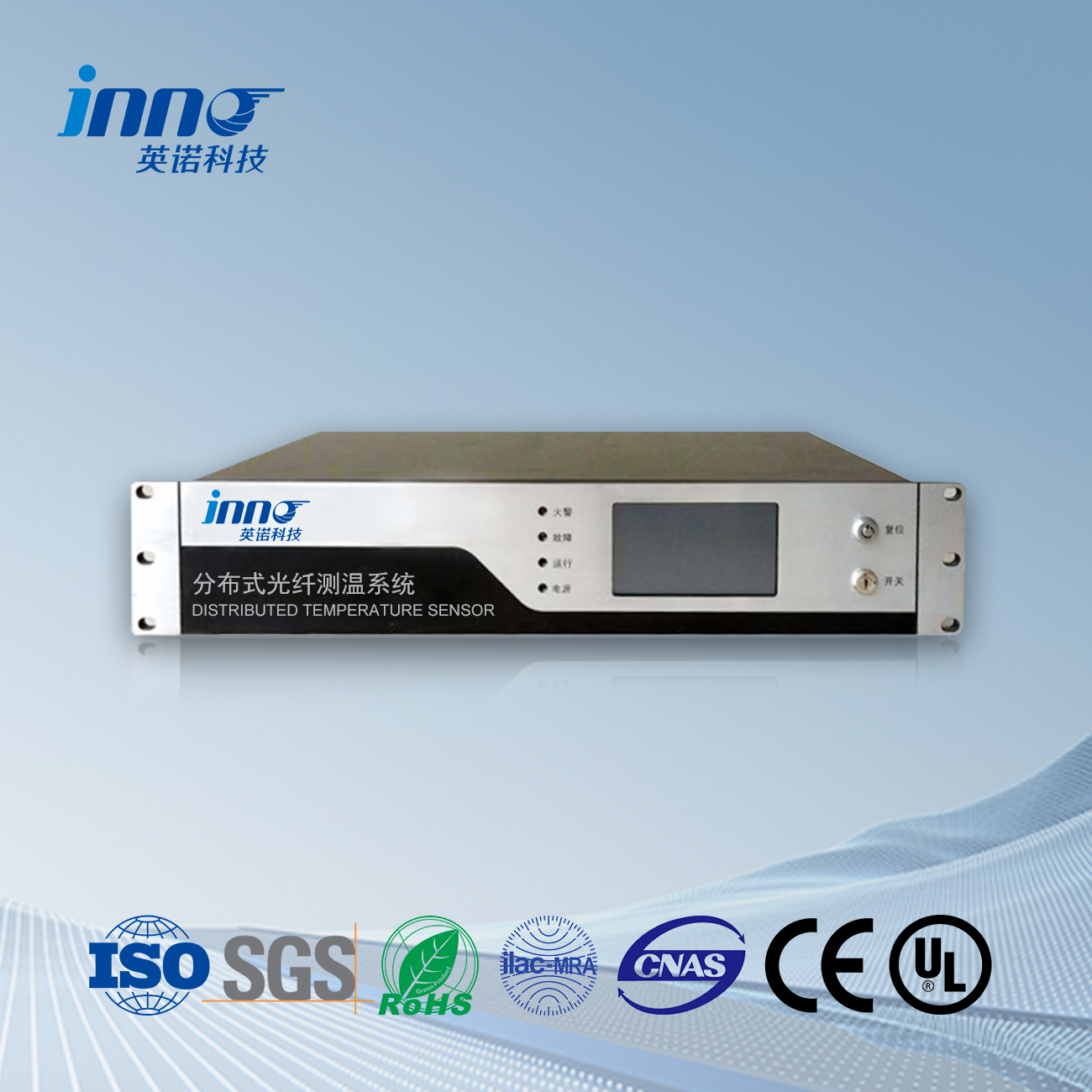The Critical Importance of Transformer Temperature Monitoring
Power transformers represent significant investments and critical infrastructure components in any electrical distribution system. Without proper monitoring, these essential assets face increased risk of failure, potentially resulting in costly downtime, extensive damage, and dangerous safety incidents. Among all monitoring parameters, temperature measurement stands as perhaps the most crucial indicator of transformer health.
Fiber optic temperature sensing technology has emerged as the gold standard for modern transformer monitoring applications. As a specialized engineer with over 15 years in power systems, I’ve witnessed the evolution from traditional monitoring methods to these advanced fiber optic solutions that offer superior accuracy, reliability, and safety benefits.
This guide will help international procurement professionals understand the critical aspects of transformer temperature monitoring systems, with special focus on cutting-edge fiber optic temperature sensors that are revolutionizing the industry.
Primary Types of Transformer Temperature Monitoring Technologies
1. Traditional Resistance Temperature Detectors (RTDs)
RTDs have historically been the standard for transformer temperature monitoring. These devices measure temperature by correlating the resistance of a metal element with temperature changes. While reliable in many applications, RTDs face limitations in transformer environments:
- Susceptible to electromagnetic interference
- Require electrical connections that introduce potential safety concerns
- Provide only point measurements rather than distributed temperature profiles
- Limited placement options due to electrical isolation requirements
2. Conventional Thermocouple Systems
Thermocouples generate voltage proportional to temperature differences between two dissimilar metals. Though relatively inexpensive, they share many of the same limitations as RTDs and typically offer lower accuracy for critical transformer applications.
3. Advanced Fiber Optic Temperature Monitoring Systems
The latest generation of fiber optic temperature sensors offers significant advantages over traditional methods:
- Fluorescence-based fiber optic temperature sensors measure temperature using optical principles rather than electrical properties
- Completely immune to electromagnetic interference (EMI) and radio frequency interference (RFI)
- Intrinsically safe with no electrical components at measurement points
- Capable of distributed sensing along the entire fiber length
- High precision measurements (typically ±0.5°C or better)
- Direct winding temperature measurement capabilities
Based on my extensive field experience, fiber optic temperature sensors represent the most significant advancement in transformer monitoring technology in recent decades.
How to Select the Optimal Transformer Temperature Monitoring System
Choosing the right monitoring system requires careful consideration of several key factors:
Transformer Size and Criticality
Larger transformers and those serving critical functions warrant more comprehensive monitoring solutions. For power transformers above 100 MVA or those serving essential infrastructure, advanced fiber optic monitoring systems are strongly recommended.
Installation Environment
Consider the electrical environment where your transformer operates. Locations with high electromagnetic interference, such as industrial settings or substations, benefit substantially from the EMI immunity of fiber optic temperature sensors.
Monitoring Scope Requirements
Determine whether you need simple top oil temperature monitoring or comprehensive winding temperature profile measurements. Fluorescence-based fiber optic temperature sensors excel in applications requiring multiple measurement points or continuous temperature profiles.
Integration Capabilities
Modern monitoring systems should offer seamless integration with your existing SCADA systems, asset management software, and predictive maintenance programs. Look for standard communication protocols and open architecture designs.
Total Cost of Ownership
While initial acquisition cost matters, consider the complete lifecycle expense including installation complexity, maintenance requirements, and expected service life. Fiber optic systems typically offer longer operational lifespans with minimal maintenance requirements.
Top 5 Recommended Transformer Temperature Monitoring Systems
Based on extensive field testing and performance evaluations, these systems represent the leading options for international buyers seeking reliable transformer temperature monitoring solutions:
1. FJINNO Advanced Fiber Monitoring System
Key Highlights: Premium fluorescence fiber optic temperature sensor system specifically designed for transformer hot-spot monitoring.
Primary Advantages:
- Exceptional measurement accuracy (±0.5°C) across wide temperature range (-40°C to +250°C)
- Multiplexing capability allowing up to 64 measurement points
- Complete immunity to electromagnetic interference
- Industry-leading response time (<1s) for real-time temperature tracking
- Factory-calibrated sensors requiring no field adjustments
- Seamless integration with major SCADA systems
Potential Drawbacks:
- Higher initial investment compared to conventional systems
- Requires specialized expertise for initial installation
Ideal For: Large power utilities and transmission companies managing critical infrastructure transformers where reliability and accuracy are paramount.
2. PowerTemp FO-2000 Integrated Monitoring Solution
Key Highlights: Cost-effective hybrid solution combining fiber optic sensors with traditional monitoring in a unified platform.
Primary Advantages:
- Excellent value proposition with core fiber optic monitoring capabilities
- User-friendly interface requiring minimal training
- Modular design allowing incremental system expansion
- Compatible with both new installations and retrofit applications
Potential Drawbacks:
- Fewer measurement points compared to premium offerings
- Limited advanced analytics capabilities
Ideal For: Medium-sized industrial operators seeking to upgrade from traditional monitoring without premium system costs.
3. TransGuard Distributed Fiber Sensing System
Key Highlights: Industry-leading distributed temperature sensing with continuous measurement along entire fiber length.
Primary Advantages:
- True distributed sensing with 0.5m spatial resolution
- Comprehensive temperature profile visualization
- Advanced predictive analytics for failure prevention
- Cloud-based monitoring with remote access capabilities
Potential Drawbacks:
- Higher complexity requiring specialized configuration
- Substantial data management considerations
Ideal For: Large utilities and grid operators requiring the most detailed temperature profiling and advanced predictive capabilities.
4. EcoTemp Basic Fiber Monitoring Kit
Key Highlights: Entry-level fiber optic temperature sensor system designed for smaller transformers and budget-conscious applications.
Primary Advantages:
- Most affordable fiber optic monitoring solution
- Simple plug-and-play installation requiring minimal expertise
- Robust design with minimal maintenance requirements
- Free basic monitoring software included
Potential Drawbacks:
- Limited measurement points (maximum 4 sensors)
- Basic alarming capabilities without advanced analytics
Ideal For: Smaller distribution transformers, educational institutions, and organizations taking first steps into fiber optic monitoring technology.
Essential Considerations When Purchasing Transformer Temperature Monitoring Systems
As an industry professional who has overseen numerous monitoring system implementations, I recommend focusing on these critical factors:
Sensor Placement and Coverage
The effectiveness of any monitoring system depends heavily on proper sensor placement. Work with manufacturers who offer application engineering support to determine optimal sensor locations based on your specific transformer design and critical hotspot areas.
Calibration and Accuracy Requirements
Verify the calibration procedures and accuracy specifications across your expected operating temperature range. Premium fluorescence fiber optic temperature sensors typically maintain calibration longer than conventional sensors, but validation protocols remain important.
Installation Complexity and Requirements
Some advanced systems may require transformer de-energization for installation, while others can be retrofitted during normal operation. Evaluate the installation requirements against your operational constraints.
Data Management and Integration
Consider how temperature data will be collected, stored, analyzed, and integrated with existing systems. Modern fiber optic monitoring systems generate valuable data that should feed into your asset management and predictive maintenance programs.
Warranty and Support Services
International buyers should pay particular attention to global support capabilities, spare parts availability, and warranty terms. The best suppliers offer comprehensive technical support and training regardless of your location.
Frequently Asked Questions About Transformer Temperature Monitoring
Q1: Why is fiber optic technology preferred over traditional temperature monitoring methods?
A1: Fiber optic temperature sensors offer significant advantages including complete immunity to electromagnetic interference, intrinsic safety with no electrical components at measurement points, ability to measure temperatures directly within transformer windings, and capability for distributed sensing. These benefits make them particularly valuable in high-voltage environments where accuracy and reliability are critical.
Q2: What is the typical return on investment for advanced fiber optic monitoring systems?
A2: While advanced monitoring systems require higher initial investment, the ROI typically materializes through extended transformer life, reduced maintenance costs, prevention of catastrophic failures, and optimization of loading capacity. For critical transformers, ROI periods of 2-4 years are common, primarily through avoided failures and optimized maintenance scheduling.
Q3: Can fiber optic monitoring systems be installed on existing transformers?
A3: Yes, many fiber optic temperature monitoring systems can be retrofitted to existing transformers. External mounting options enable installation without de-energizing the transformer, while more comprehensive solutions may require planned outages. Consult with manufacturers about retrofit options specific to your transformer models.
Q4: How do fluorescence-based fiber optic sensors differ from FBG sensors?
A4: Fluorescence-based fiber optic temperature sensors measure temperature by analyzing changes in fluorescent decay time when optical fibers are exposed to ultraviolet light. Fiber Bragg Grating (FBG) sensors use periodic variations in the refractive index of the fiber core to reflect specific wavelengths proportional to temperature. Both technologies offer excellent performance.
Q5: What maintenance requirements should we anticipate for fiber optic monitoring systems?
A5: Fiber optic monitoring systems typically require minimal maintenance compared to traditional systems. Routine activities include periodic validation of readings, inspection of optical connections, and occasional software updates. Most systems include self-diagnostic capabilities to identify potential issues. The fiber optic sensors themselves are passive components with expected lifespans matching or exceeding the transformer itself.
Conclusion: Investing in Advanced Transformer Monitoring
Implementing an advanced transformer temperature monitoring system represents one of the most effective investments for ensuring the reliability, longevity, and safe operation of your critical power assets. The evolution toward fiber optic temperature sensing technology offers unprecedented visibility into transformer thermal conditions, enabling proactive maintenance strategies and optimized operational decisions.
For international buyers evaluating these systems, I recommend focusing on long-term value rather than initial acquisition cost. The enhanced capabilities, increased reliability, and extended service life of advanced fiber optic solutions typically justify their premium pricing through tangible operational benefits.
Whether you’re upgrading existing monitoring infrastructure or specifying requirements for new transformer purchases, incorporating fiber optic temperature sensors—particularly fluorescence-based fiber optic temperature sensors—positions your organization at the forefront of transformer asset management practices.
Ready to explore the right monitoring solution for your specific needs? Contact our engineering team for a personalized consultation and system recommendation based on your transformer fleet characteristics and operational requirements.
Fiber optic temperature sensor, Intelligent monitoring system, Distributed fiber optic manufacturer in China
 |
 |
 |
 INNO fibre optic temperature sensors ,temperature monitoring systems.
INNO fibre optic temperature sensors ,temperature monitoring systems.
